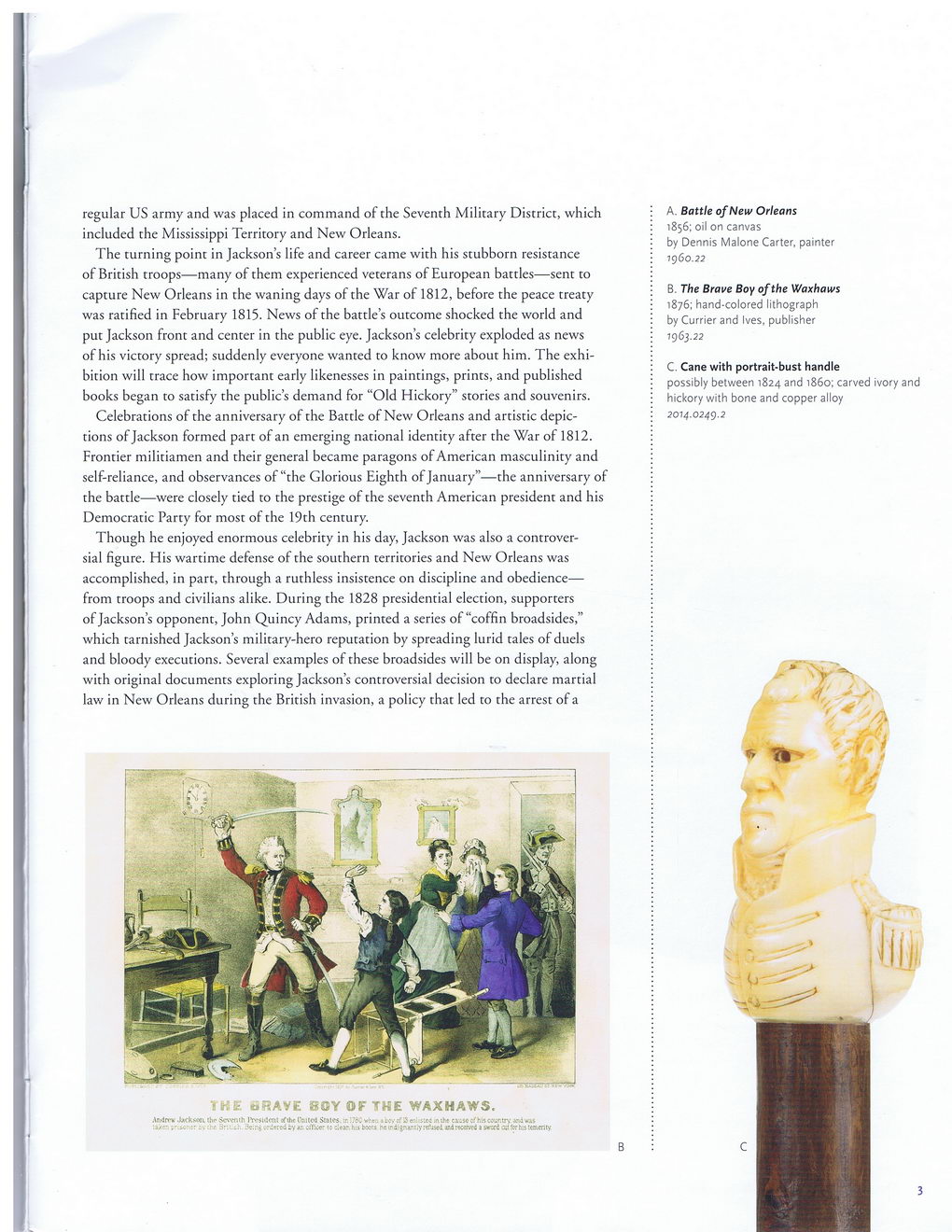This text was obtained via automated optical character recognition.
It has not been edited and may therefore contain several errors.
regular US army and was placed in command of the Seventh Military District, which included the Mississippi Territory and New Orleans. The turning point in Jackson’s life and career came with his stubborn resistance of British troops—many of them experienced veterans of European battles—sent to capture New Orleans in the waning days of the War of 1812, before the peace treaty was ratified in February 1815. News of the battle’s outcome shocked the world and put Jackson front and center in the public eye. Jackson’s celebrity exploded as news of his victory spread; suddenly everyone wanted to know more about him. The exhibition will trace how important early likenesses in paintings, prints, and published books began to satisfy the public’s demand for “Old Hickory” stories and souvenirs. Celebrations of the anniversary of the Battle of New Orleans and artistic depictions of Jackson formed part of an emerging national identity after the War of 1812. Frontier militiamen and their general became paragons of American masculinity and self-reliance, and observances of “the Glorious Eighth of January”—the anniversary of the battle—were closely tied to the prestige of the seventh American president and his Democratic Party for most of the 19th century. Though he enjoyed enormous celebrity in his day, Jackson was also a controversial figure. His wartime defense of the southern territories and New Orleans was accomplished, in part, through a ruthless insistence on discipline and obedience— from troops and civilians alike. During the 1828 presidential election, supporters of Jackson’s opponent, John Quincy Adams, printed a series of “coffin broadsides,” which tarnished Jackson’s military-hero reputation by spreading lurid tales of duels and bloody executions. Several examples of these broadsides will be on display, along with original documents exploring Jackson’s controversial decision to declare martial law in New Orleans during the British invasion, a policy that led to the arrest of a - ti^AVE BOY OF THE WAXHAWS. Andrew Jackson, tin* Seventh President ofitic United Stales. :r.'.76C wr.e:-. abeyff i3eniis:ea inihe cause of his country, ana was ;a/er. y^ci’.cr rv ;r.c 3r:;.th. 3e:r.§ ordered by An c;Tioer tc clear, his boots he tridignar.tiyreftsei and received a sword cut for his temerity. A. Battle of New Orleans 1856; oil on canvas by Dennis Malone Carter, painter 1960.22 B. The Brave Boy of the Waxhau/s 1876; hand-colored lithograph by Currier and Ives, publisher 1963.22 C. Cane with portrait-bust handle possibly between 1824 and i860; carved ivory and hickory with bone and copper alloy 2014.0249.2 t .

New Orleans Quarterly 2014 Fall (05)